- Home
- David Weber
Safehold 10 Through Fiery Trials
Safehold 10 Through Fiery Trials Read online
Begin Reading
Table of Contents
About the Author
Copyright Page
Thank you for buying this
Tom Doherty Associates ebook.
To receive special offers, bonus content,
and info on new releases and other great reads,
sign up for our newsletters.
Or visit us online at
us.macmillan.com/newslettersignup
For email updates on the author, click here.
The author and publisher have provided this e-book to you without Digital Rights Management software (DRM) applied so that you can enjoy reading it on your personal devices. This e-book is for your personal use only. You may not print or post this e-book, or make this e-book publicly available in any way. You may not copy, reproduce, or upload this e-book, other than to read it on one of your personal devices.
Copyright infringement is against the law. If you believe the copy of this e-book you are reading infringes on the author’s copyright, please notify the publisher at: us.macmillanusa.com/piracy.
For everyone who takes Maikel Staynair’s advice and makes the courageous decision to decide for yourself what you believe. Whatever you finally decide, you are precious beyond belief.
An Introduction to the History of Safehold
In 2091, the sublight colony ship Galileo established the first extra-solar colony in the Alpha Centauri System.
In 2123, Doctor Samantha Adenauer and her team developed the first practical hyperdrive.
In 2350, the Malachai System, with a population of 436,000, became the fifteenth voting member system of the Terran Federation.
In 2367, the survey ship Adenauer discovered the first evidence of an advanced nonhuman species. Christened the Alphanes, they had achieved a three-star civilization, their technology had been substantially inferior to humanity’s current level … and they had been exterminated in a massive interstellar war. The scientific community’s majority view was that the Alphanes, who’d clearly been a militant species, had destroyed themselves. A minority, however, led by anthropologist Anton Sugawara, argued that the evidence suggested the Alphane civilization had been destroyed by an external force.
Sugawara was pilloried by the press—which christened his putative interstellar predators the Gbaba—for his paranoia. No one in government took the ridiculous notion seriously … but the Federation began expanding its navy—which had been little more than a police and rescue force—and building genuine warships. Not that anyone really believed in genocidal alien menaces, of course. Everyone in government was very clear about that! Still, one had to take some precautions, even if it was solely to assuage the dread of those who might have been frightened by Sugawara’s absurd theories.
Everyone in government was very clear about that, too.
In 2370 Anton Sugawara was very quietly named the first cabinet-level Navy Minister and naval expansion was even more quietly—but enormously—accelerated.
In 2378, in the Crestwell System, the heavy cruiser TFNS Swiftsure discovered Sugawara had been right.
* * *
Swiftsure was destroyed with all hands. The outpost in Crestwell was destroyed. Within seven months, every single human in three of the Federation’s fourteen major extra-solar star systems was dead.
Sugawara’s navy fought back hard, stopped the incursion, and—over the next couple of years—retook the lost star systems and drove the Gbaba back into their own space. Until, in 2381, in what came to be known as the Starfall System, Admiral Ellen Thomas’ First Fleet, the TFN’s major combat force, discovered that all humanity had seen so far were the Gbaba’s light frontier forces. Now the real Gbaba navy had mobilized, and the result was massacre.
First Fleet’s tattered survivors carried the warning home … and arrived upon the wings of Apocalypse.
The Federation had begun quietly fortifying its star systems at the same time it created its new navy. That process had been driven with frantic speed from the moment of Swiftsure’s destruction, and any star system made an awesome fortress. But no fortification could stand against the forces the Gbaba were willing to commit, the losses they were prepared to accept.
In 2406, the Federation’s last major extra-solar star system was overwhelmed.
In 2411, all human population enclaves outside the Sol System’s asteroid belt were withdrawn to the “Final Redoubt” inside the orbit of Mars.
In 2421, the last surviving Federation fleet launched a desperate effort to break through the Gbaba blockade. It was hunted down. Its units were destroyed to the last ship.
In 2430, the Gbaba cracked the Final Redoubt and all human life in the Sol System ceased to exist.
In 3249, a young woman named Nimue Alban awakened in a cavern on a planet named Safehold … and discovered that she’d been dead for 828 years.
* * *
Lieutenant Commander Alban had no memory of how she’d come to that cavern, but Commodore Pei Kau-yung, her mentor and commanding officer, had left a recording to explain. The fleet which had died in 2421 had actually succeeded in its true mission, which had been to cover Operation Ark, the Federation’s last-ditch effort to establish a hidden colony among the distant stars where humanity might survive. Commodore Pei had commanded the colony ships’ close escort when the rest of the Navy deliberately drew the Gbaba pursuit in upon itself and fought to the last man and woman to conceal the colony fleet’s existence.
Nimue Alban had volunteered to serve on that sacrificial fleet’s flagship, giving up her opportunity to accompany her commodore and his beloved wife, Pei Shan-wei, the scientist assigned to lead Operation Ark’s terraforming fleet, to the colony which had become Safehold. And she’d done so because they and a core of their colleagues in Operation Ark’s command crew had come to believe that Eric Langhorne, Operation Ark’s senior administrator, intended to violate Operation Ark’s mission plan.
That mission plan had called for the colony to abandon advanced technology for three hundred years, long enough—according to all of the Federation’s projections, based on forty years of combat and analysis of Gbaba operational patterns—for the Gbaba to complete any scouting sweeps of the region in which the colony might lie. The command crew was to preserve humanity’s knowledge and technology in small, carefully concealed enclaves. They and their immediate children were to be the custodians of that knowledge until the threat of discovery had passed, and then they were to restore that technology—and, above all, the warning of the Gbaba’s existence—to the colonists’ descendants.
But, as Kau-yung and Shan-wei had feared, Langhorne—traumatized by the brutal destruction of his entire species, obsessed by the knowledge that the eight million colonists in cryo-suspension aboard his forty mammoth transports represented every surviving human being—rejected that plan. He concluded that only the permanent renunciation of advanced technology could prevent humankind from someday venturing once again into space and, inevitably, encountering the Gbaba once more. And so, while Pei Shan-wei terraformed Safehold into humanity’s new home, and while Pei Kau-yung and his handful of warships guarded the terraforming fleet, Eric Langhorne and Adorée Bédard, his chief psychologist—in hiding with the main fleet, ten light-years from Safehold—reprogrammed those colonists’ memories. They erased all knowledge of any previous life. They programmed the colonists to believe that the moment in which they first opened their eyes on Safehold was the very first day of creation … and that the command crew were archangels, sent by God to educate them into the lives He had designed them to live.
The Peis were horrified but not taken unaware. Shan-wei and her fellows in the Alexandria Enclave, on Safehold’s southernmost co
ntinent, fought Langhorne openly, arguing against his policy, vowing to follow the original mission plan. Aware that the Alexandrians were heavily outnumbered in the command crew staff Langhorne had stacked with people as traumatized—and determined to kill technology—as himself, she and her husband separated after a violent public disagreement in which he ostensibly accepted Langhorne’s new plan. They became estranged, embittered opponents for the next fifty-seven years, with Shan-wei retreating to Alexandria and Kau-yung remaining Langhorne’s chief military advisor.
In order to kill technology once and for all, Langhorne, Bédard, and Maruyama Chihiro, Langhorne’s Assistant Administrator, created the Holy Writ, the seminal scripture of the Church of God Awaiting. The Writ consisted of books by the various “Archangels” which provided religious explanations specifically designed to prevent the reemergence of the scientific method. In addition, it contained the Proscriptions—the list of specifically proscribed knowledge and a religious limitation only to technologies powered by wind, water, or muscle.
Shan-wei and her supporters believed it would be impossible to prevent technology from someday reemerging, whatever constraints Langhorne and Bédard might have created. Although they’d retreated to Alexandria and outwardly accepted Langhorne’s legal authority, they continued to work quietly towards the original mission plan and its goals. However, they also feared they would ultimately be forcibly constrained to accept Langhorne’s anti-technology policies. What they did not expect was for them and everyone in the Alexandria Enclave to be murdered in a kinetic strike which obliterated the enclave and transformed the small continent on which it had been located into Armageddon Reef, the most desolate and accursed location on all of Safehold. Heartbroken and furious—and determined, above all, that Langhorne must not succeed in erasing all memory of the Gbaba—Pei Kau-yung carried a miniaturized nuclear device to his next meeting with Langhorne and his council … and detonated it.
* * *
Alexandria’s destruction had occurred 750 standard years (824 Safeholdian years) before Nimue awoke in that cavern and discovered the reason she had volunteered to die. Lieutenant Commander Alban had been the only member of Commodore Pei’s staff who possessed a PICA: a Personality Integrated Cybernetic Avatar. In essence, a PICA was a robotic/android body, many times as strong as any human, virtually indestructible without the use of heavy crew-served weapons, and effectively immortal. A PICA’s user could upload his or her personality into it for dangerous extreme sports, for example, then download the PICA’s experiences into his or her own memory afterward.
Full-capability PICAs such as Nimue’s were rare and extremely expensive; hers had been a gift from her billionaire father, bestowed upon a daughter he’d known would die before she was forty. By leaving her PICA aboard Commodore Pei’s flagship while she transferred to the sacrificial covering force she had removed it from any equipment inventory Langhorne might have accessed, and Shan-wei’s terraforming crew had excavated the cavern complex in which that PICA had been hidden beneath the roots of Mount Olympus, Safehold’s tallest mountain. From the beginning, that PICA had been intended as the Peis’ hidden weapon. Nimue’s mission was to ensure that the Gbaba were not, in fact, forgotten, despite anything Langhorne’s anti-technology plan might accomplish.
Nimue herself had no memory of having volunteered. There’d been no time to record an updated personality which would have remembered, and so in a very real sense, the Nimue Alban who awakened had not volunteered. It never occurred to her to reject her mission, however … even though the challenges she faced were more daunting than anything the original Nimue could possibly have imagined.
The Church of God Awaiting had survived. Pei Kau-yung’s final attack had, indeed, killed Langhorne and the majority of his administrative council’s “Archangels.” Unfortunately, it had not killed them all. Maruyama Chihiro and Androcles Schueler had survived, and the bitter fighting against the “lesser angels” who had supported Shan-wei, even after her death, had produced a Holy Writ even more repressive than Langhorne’s original. Safehold’s population had increased enormously, to well over a billion, but Mother Church controlled all those millions upon millions, and her authority was unquestioned.
Unlike murdered Terra, Safehold had no atheists, not even agnostics, in large part because the eight million “Adams” and “Eves” who had awakened on the Day of Creation were all literate. Hundreds of thousands of them left personal accounts, journals, diaries, and every single word of The Testimonies supported the Holy Writ in its totality. There were no disputed texts, no breaks in a written historical record which covered everything since—literally—the beginning of time. And every word of The Testimonies was a completely honest—and accurate—account of what had happened, left by eyewitnesses to the events they described.
Not only did the secular historical record support the Writ, but Mother Church controlled all education on the planet, and the Inquisition decided what was taught. And if education proved insufficient, there was always coercion. The Book of Schueler specifically required the Inquisition to mercilessly hunt down and punish heresy or apostasy in any form. The gruesome tortures it prescribed as a portion of that Punishment were hideous beyond belief.
And, to make Nimue’s challenge complete, the kinetic bombardment system which had turned the Alexandria Enclave into Armageddon Reef remained active in orbit and apparently—or at least possibly—in communication with a high-tech presence buried under the Temple, the Church of God Awaiting’s equivalent of the Vatican or Mecca, located in the heart of Safehold’s largest city.
Nimue possessed some advantages, in addition to the capabilities of her PICA. Shan-wei had administratively “lost” or “expended” enough hardware to provide a limited manufacturing base, a supply of advanced weapons and other tools, the memory core of a major Federation library, and the services of a tactical (if none too bright) AI named Owl, in the caverns she christened “Nimue’s Cave.”
It wasn’t much, set against the scope of her mission.
After evaluating her resources and familiarizing herself with Safehold, she concluded that she must somehow attack and destroy Safehold’s faith in the Archangels and the Holy Writ. She had no way of knowing what was buried beneath the Temple, but if it was any sort of monitoring system, it could easily use the kinetic bombardment platforms to destroy any threat to the Writ’s anti-technology prohibitions, which meant she could not openly use advanced technology.
Safehold’s technological capabilities were a strange mix of the 15th century and techniques from much later periods of history, courtesy of instructions the “Archangels” had recorded in the Holy Writ. Those techniques were applied by guilds of skilled artisans in small shops, not in vast factories, and they had been shorn of all scientific explanation when they were recorded. Like the surprisingly capable Safeholdian practice of medicine, they had become religious instructions delivered directly from God through the Archangels, and eight centuries of experience had validated them because they always worked exactly as the Writ said they would. That meant they provided building blocks, starting points, from which she might begin. But it also meant she must operate only within those allowable parameters and slowly, gradually push their boundaries until their expansion eroded the Holy Writ’s foundations to the point of collapse.
And that must, inevitably, provoke a religious war against the Church’s authority. As a historian, she knew what that might entail, and her heart quailed at the thought. As the only individual who remembered the Gbaba, she knew she had no choice.
Her study of Safehold had focused in on the island kingdom of Charis. Charis was the smallest of Safehold’s major kingdoms, but it was extremely wealthy, a nation of mariners and merchants, of entrepreneurs and skilled artisans. Despite the Proscriptions’ limitations, Charis stood on the very brink of an industrial revolution—powered, like Terra’s own, by waterwheels—albeit without the critical ability to question received authority or look for scientific expla
nations for processes. In addition, Charis, ruled by the Ahrmahk Dynasty, supported a tradition in which individual rights and freedoms—within the limitations of the Writ, of course—were strongly protected.
And it was a kingdom in which, if Nimue was not mistaken, some of those forbidden questions were on the brink of being asked.
* * *
After identifying Charis, Nimue reconfigured her PICA to become Seijin Merlin Athrawes. The seijins were legendary figures, the “warrior saints” of the War Against the Fallen. They were warriors, teachers, mentors, and tradition—and The Testimonies—ascribed superhuman abilities to them, which would provide cover for “Merlin’s” use of his PICA’s capabilities.
Merlin introduced himself to the Ahrmahks by saving nineteen-year-old Crown Prince Cayleb from assassination and then offering his services to Cayleb’s father, King Haarahld.
The king was a man beset. Charis’ wealth and enormous merchant fleet had evoked growing resentment and envy among many of the other realms of Safehold for years. Now it seemed clear those other realms were marching towards open war against Charis … with the support of Mother Church, and—especially—of Grand Inquisitor Zhaspahr Clyntahn, who clearly distrusted Charisian orthodoxy. King Haarahld saw Merlin’s arrival as a heaven-sent advantage in that looming conflict. Among other things, Seijin Merlin “saw visions,” courtesy of the highly stealthy reconnaissance remotes he could deploy from orbit. And he had a vast store of knowledge he could impart—none of which quite violated the Proscriptions—from the reintroduction of arabic numerals and algebra to the invention of the cotton gin, spinning jenny, and a new design for cannon-armed sailing warships to replace the oared galleys of Safehold. Before Merlin’s arrival, Haarahld had seen only death, ruin, and the brutal subjugation of his people. Now he saw at least a chance of survival, despite the enormous odds against Charis.

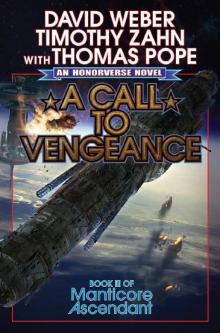 A Call to Vengeance
A Call to Vengeance March Upcountry
March Upcountry The Service of the Sword
The Service of the Sword Worlds of Honor
Worlds of Honor The Sword of the South
The Sword of the South Mission of Honor
Mission of Honor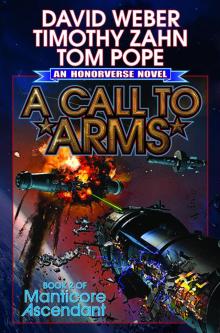 A Call to Arms
A Call to Arms The Captain From Kirkbean
The Captain From Kirkbean March to the Sea
March to the Sea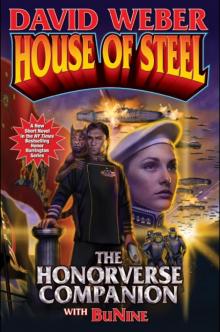 House of Steel: The Honorverse Companion
House of Steel: The Honorverse Companion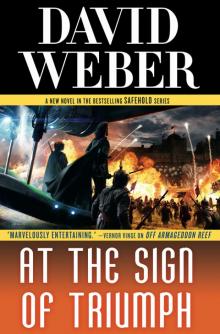 At the Sign of Triumph
At the Sign of Triumph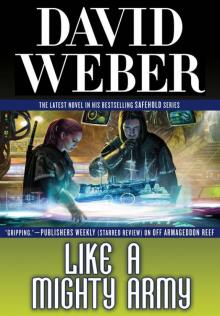 Like a Mighty Army
Like a Mighty Army Heirs of Empire
Heirs of Empire March to the Stars
March to the Stars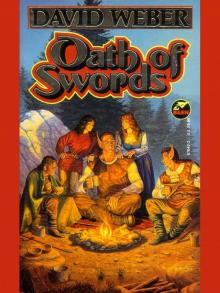 Oath of Swords
Oath of Swords On Basilisk Station
On Basilisk Station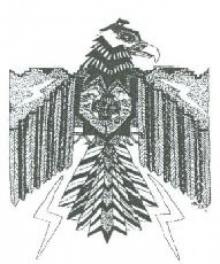 Oath of Swords and Sword Brother
Oath of Swords and Sword Brother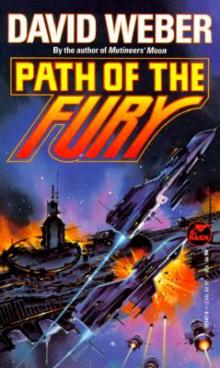 Path of the Fury
Path of the Fury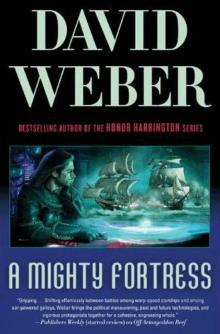 A Mighty Fortress
A Mighty Fortress War of Honor
War of Honor 1633
1633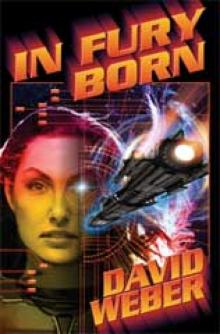 In Fury Born
In Fury Born Crusade
Crusade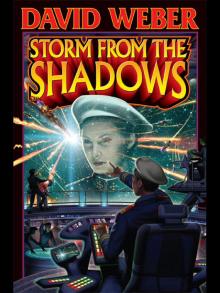 Storm From the Shadows
Storm From the Shadows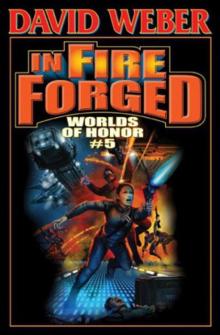 In Fire Forged
In Fire Forged A Beautiful Friendship
A Beautiful Friendship Into the Light
Into the Light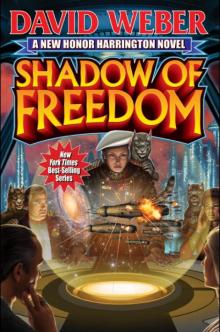 Shadow of Freedom
Shadow of Freedom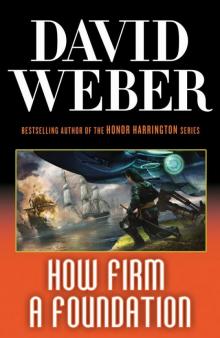 How Firm a Foundation
How Firm a Foundation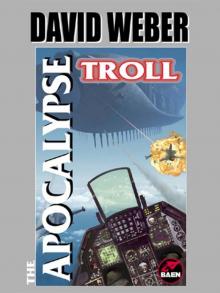 The Apocalypse Troll
The Apocalypse Troll More Than Honor
More Than Honor Crown of Slaves
Crown of Slaves The Gordian Protocol
The Gordian Protocol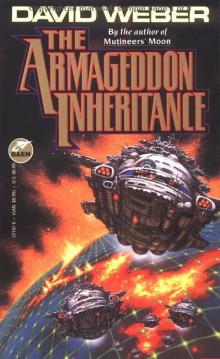 The Armageddon Inheritance
The Armageddon Inheritance Out of the Dark
Out of the Dark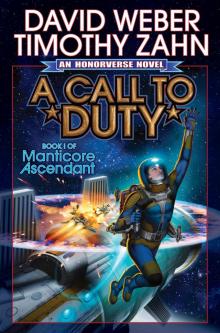 A Call to Duty
A Call to Duty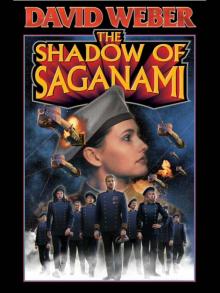 The Shadow of Saganami
The Shadow of Saganami Wind Rider's Oath
Wind Rider's Oath The Stars at War
The Stars at War Uncompromising Honor - eARC
Uncompromising Honor - eARC Fire Season
Fire Season A Rising Thunder
A Rising Thunder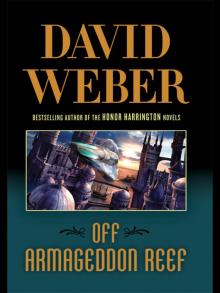 Off Armageddon Reef
Off Armageddon Reef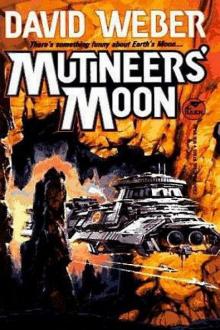 Mutineer's Moon
Mutineer's Moon Hell Hath No Fury
Hell Hath No Fury Worlds of Weber
Worlds of Weber Through Fiery Trials--A Novel in the Safehold Series
Through Fiery Trials--A Novel in the Safehold Series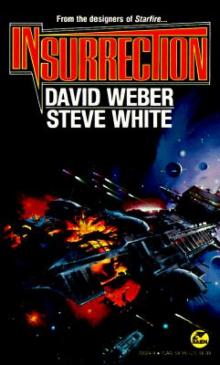 Insurrection
Insurrection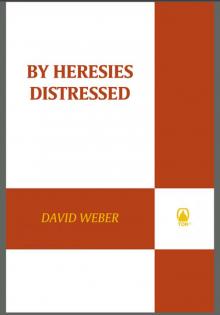 By Heresies Distressed
By Heresies Distressed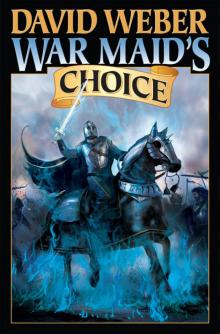 War Maid's Choice
War Maid's Choice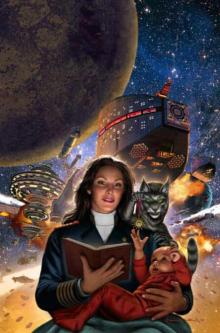 At All Costs
At All Costs Shadow of Victory
Shadow of Victory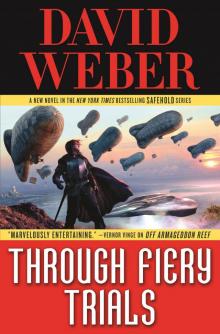 Through Fiery Trials
Through Fiery Trials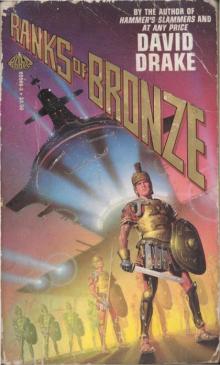 Ranks of Bronze э-1
Ranks of Bronze э-1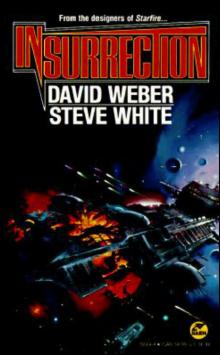 The Insurrection
The Insurrection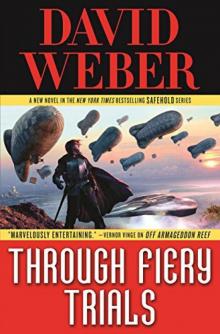 Safehold 10 Through Fiery Trials
Safehold 10 Through Fiery Trials Old Soldiers
Old Soldiers In Death Ground s-2
In Death Ground s-2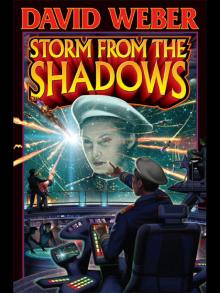 Storm from the Shadows-OOPSIE
Storm from the Shadows-OOPSIE In Enemy Hands hh-7
In Enemy Hands hh-7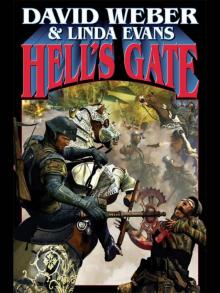 Hell's Gate-ARC
Hell's Gate-ARC The Armageddon Inheritance fe-2
The Armageddon Inheritance fe-2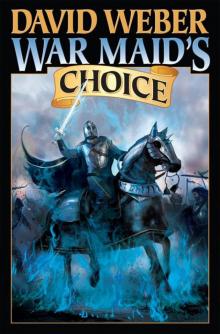 War Maid's choice wg-4
War Maid's choice wg-4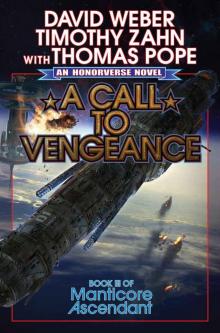 A Call to Vengeance (Manticore Ascendant Book 3)
A Call to Vengeance (Manticore Ascendant Book 3) Heirs of Empire fe-3
Heirs of Empire fe-3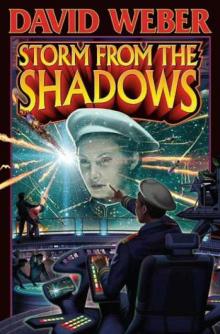 Storm From the Shadows si-2
Storm From the Shadows si-2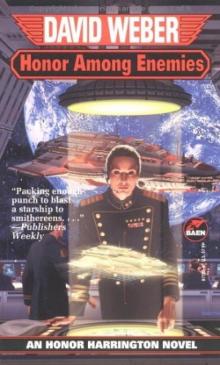 Honor Among Enemies hh-6
Honor Among Enemies hh-6 Changer of Worlds woh-3
Changer of Worlds woh-3 Bolo! b-1
Bolo! b-1 Flag In Exile hh-5
Flag In Exile hh-5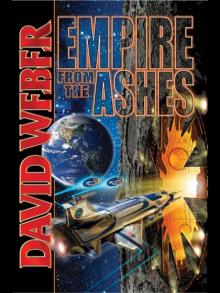 Empire from the Ashes
Empire from the Ashes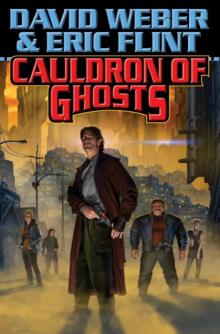 Cauldron of Ghosts
Cauldron of Ghosts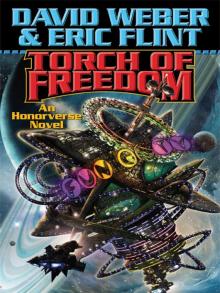 Torch of Freedom
Torch of Freedom March To The Sea im-2
March To The Sea im-2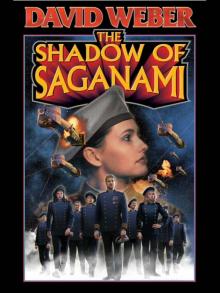 Shadow of Saganami
Shadow of Saganami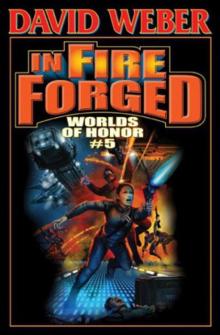 In Fire Forged: Worlds of Honor V-ARC
In Fire Forged: Worlds of Honor V-ARC Cauldron of Ghosts (eARC)
Cauldron of Ghosts (eARC)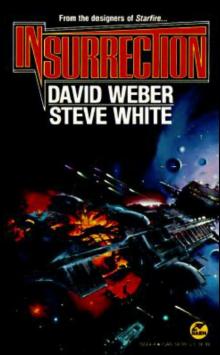 Insurrection s-4
Insurrection s-4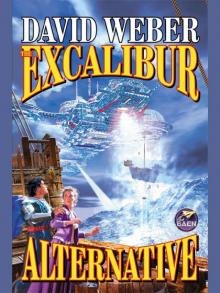 The Excalibur Alternative
The Excalibur Alternative Shadow of Freedom-eARC
Shadow of Freedom-eARC The Short Victorious War
The Short Victorious War Manticore Ascendant 1: A Call to Duty (eARC)
Manticore Ascendant 1: A Call to Duty (eARC)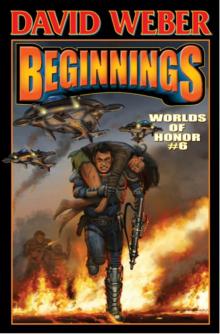 Beginnings-eARC
Beginnings-eARC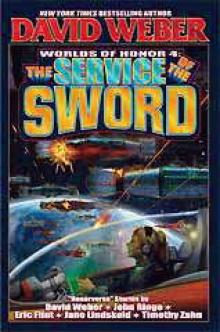 The Service of the Sword woh-4
The Service of the Sword woh-4 The Sword of the South - eARC
The Sword of the South - eARC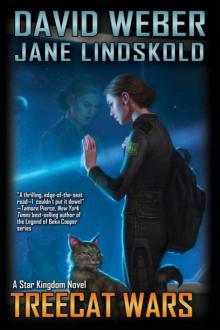 Treecat Wars sh-3
Treecat Wars sh-3 Worlds of Honor woh-2
Worlds of Honor woh-2 Fire Season sk-2
Fire Season sk-2 March To The Stars im-3
March To The Stars im-3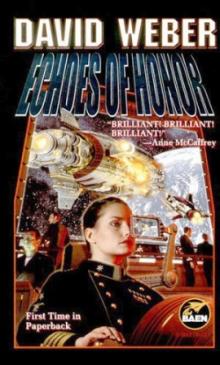 Echoes Of Honor hh-8
Echoes Of Honor hh-8 A Beautiful Friendship mth-1
A Beautiful Friendship mth-1 The Universe of Honor Harrington mth-4
The Universe of Honor Harrington mth-4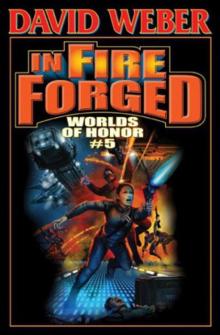 In Fire Forged: Worlds of Honor V
In Fire Forged: Worlds of Honor V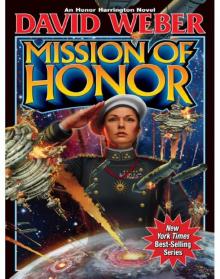 Mission of Honor-ARC
Mission of Honor-ARC March Upcountry im-1
March Upcountry im-1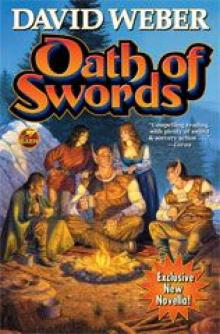 Sword Brother wg-4
Sword Brother wg-4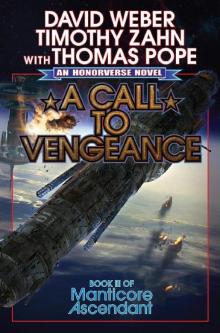 Manticore Ascendant 3- A Call to Vengeance
Manticore Ascendant 3- A Call to Vengeance We Few
We Few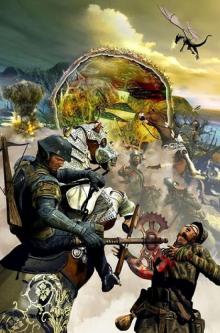 Hell's Gate m-1
Hell's Gate m-1 Throne of Stars
Throne of Stars Empire of Man
Empire of Man The War God's Own wg-2
The War God's Own wg-2 Wind Rider's Oath wg-3
Wind Rider's Oath wg-3 A Rising Thunder-ARC
A Rising Thunder-ARC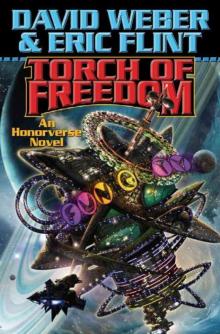 Torch of Freedom wos-2
Torch of Freedom wos-2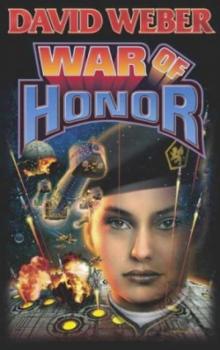 War Of Honor hh-10
War Of Honor hh-10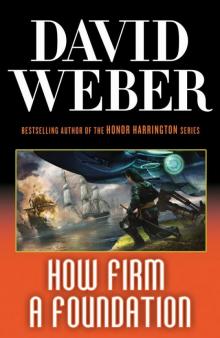 How Firm a Foundation (Safehold)
How Firm a Foundation (Safehold)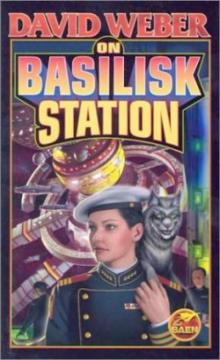 On Basilisk Station hh-1
On Basilisk Station hh-1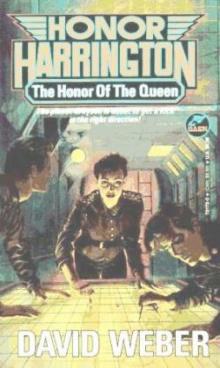 The Honor of the Qween hh-2
The Honor of the Qween hh-2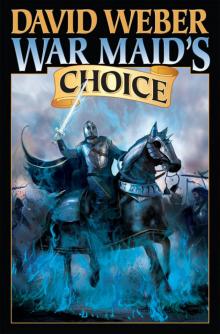 War Maid's Choice-ARC
War Maid's Choice-ARC Oath of Swords-ARC
Oath of Swords-ARC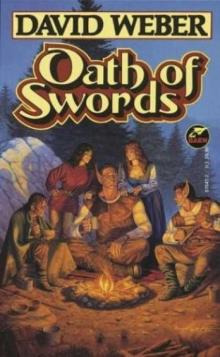 Oath of Swords wg-1
Oath of Swords wg-1 A Beautiful Friendship-ARC
A Beautiful Friendship-ARC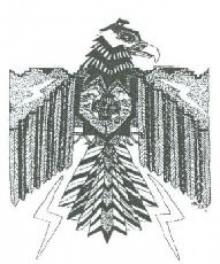 Sword Brother
Sword Brother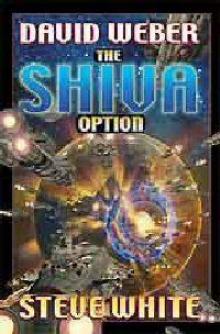 Shiva Option s-3
Shiva Option s-3 Sir George And The Dragon
Sir George And The Dragon Ashes Of Victory hh-9
Ashes Of Victory hh-9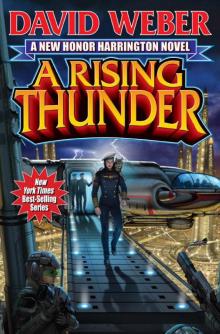 A Rising Thunder hh-13
A Rising Thunder hh-13 The Road to Hell - eARC
The Road to Hell - eARC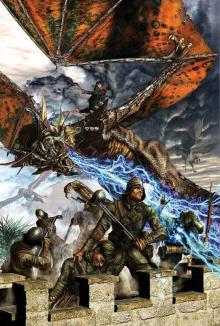 Hell Hath No Fury m-2
Hell Hath No Fury m-2 The Road to Hell (Hell's Gate Book 3)
The Road to Hell (Hell's Gate Book 3)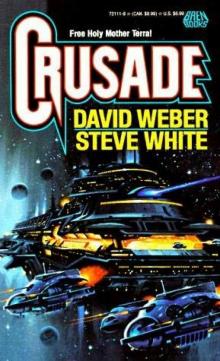 Crusade s-1
Crusade s-1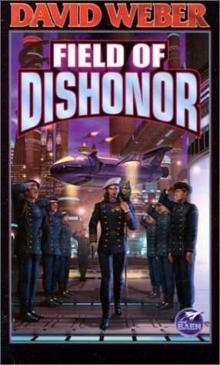 Field Of Dishonor hh-4
Field Of Dishonor hh-4 The Honor of the Queen
The Honor of the Queen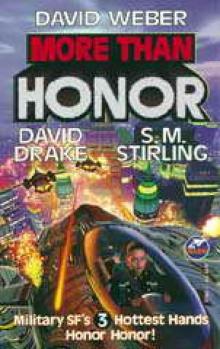 More Than Honor woh-1
More Than Honor woh-1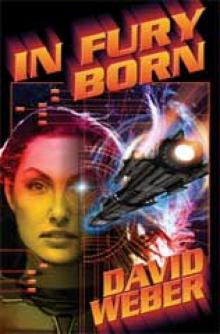 In Fury Born (ARC)
In Fury Born (ARC)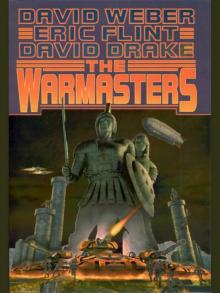 The Warmasters
The Warmasters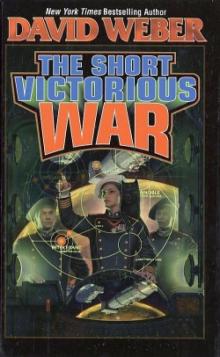 The Short Victorious War hh-3
The Short Victorious War hh-3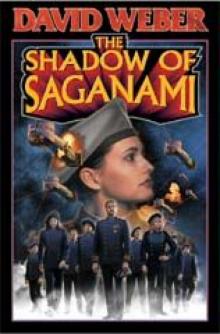 The Shadow of Saganami si-1
The Shadow of Saganami si-1 Empire of Man 01 - March Upcountry
Empire of Man 01 - March Upcountry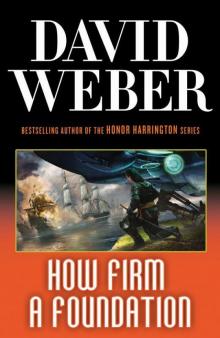 How firm a foundation s-5
How firm a foundation s-5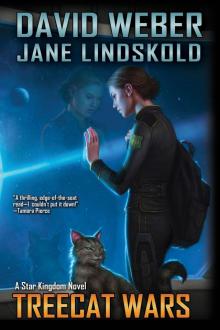 Treecat Wars
Treecat Wars